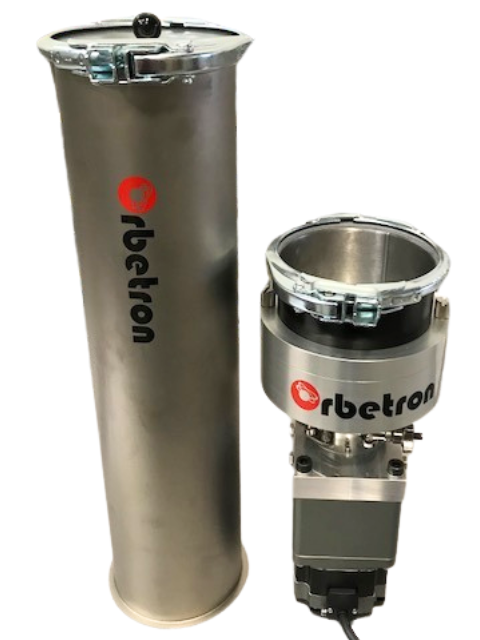Bulk material handling often operates behind the scenes, keeping the wheels of the industry turning. However, moving, storing, and processing materials can directly impact your bottom line. Hidden inefficiencies within these processes quietly erode productivity, increase costs, and even jeopardize product quality.
In this blog, we’ll discuss best practices that merge cutting-edge technologies with a focus on process optimization and a human-centered approach. Learn how automation, data-driven insights, ergonomic design strategies, and a commitment to continuous improvement can transform your bulk material handling operations.
Let’s begin.
1. The Power of Automation
Automation in bulk material handling injects speed, precision, and tireless reliability into processes that were once manual and labor-intensive.
Strategic implementation of automation offers compelling benefits, starting with increased throughput. Robotic systems excel at repetitive, physically demanding tasks. They don’t tire, need breaks, or deviate in precision across lengthy shifts. This ability to load, unload, palletize, or dispense ingredients consistently translates directly into higher production output.
Secondly, automation frees up valuable human resources. Tasks, once requiring dedicated operators, can be handled autonomously, allowing for the reallocation of workers to more complex, value-adding activities.
Additionally, automation offers unparalleled consistency when precise blending, dispensing, or batching is required. Elimination of human variability minimizes errors, reduces waste, and ensures product quality.
Safety enhancements are another excellent benefit. Automated guided vehicles (AGVs) tirelessly transport materials, limiting the need for forklifts operating in confined spaces and inherently decreasing accident risks. Smart conveyors, capable of automatically routing material based on production needs, provide adaptability and flexibility to respond to fluctuating demands in real-time.
Recommended Read: What to Know About Your Materials When Choosing Feeder Technology
2. Leveraging Data Analytics

Modern bulk material handling systems equipped with sensors have the potential to become self-diagnostic, providing a wealth of operational data.
These sensors, monitoring factors like flow rates, vibration signatures, temperatures, energy consumption, and countless other parameters, paint a real-time picture of equipment health and process efficiency. Data analytics tools turn this raw data into actionable insights. They can pinpoint subtle flow restrictions that point towards a developing blockage or highlight abnormal vibration patterns suggesting impending component failure.
Predictive maintenance powered by these insights represents a paradigm shift. Repairs can be proactively scheduled during planned downtime instead of reactively scrambling when breakdowns occur.
The historical data collected offers even further opportunities. By analyzing trends, bottlenecks become obvious, equipment efficiency can be compared, and ideal routes or scheduling strategies can be determined.
3. Prioritizing Process Flow Optimization
Analyzing the journey of your materials from arrival to their final destination can reveal hidden inefficiencies that hinder productivity.
Break down your process into discrete steps, mapping out how materials move, where handoffs between processes occur, and the overall distances traveled. Identify bottlenecks, i.e., points where materials queue up, slowing down the entire chain.
Process simulation tools offer valuable insights, allowing you to experiment virtually with different facility layouts and equipment configurations. You can shave valuable time off production cycles by optimizing equipment placement and minimizing unnecessary transport.
Consolidating conveying steps or eliminating redundant material transfers streamlines the process. Analyze your process for the potential to introduce staging areas: dedicated buffers that ensure downstream operations always have a ready supply of materials.
4. The Importance of Operator Training
Technology alone won’t guarantee smooth operations in bulk material handling. Investing in training the people who interact with those systems daily is vital to unlocking their full potential.
Comprehensive operator training builds confidence and knowledge. In-depth instruction on equipment functionality and safety protocols creates a competent first line of defense in incident prevention and troubleshooting.
Training operators to identify subtle signs of equipment malfunctions, e.g., abnormal noises or vibrations or deviations in material flow patterns, promotes proactive problem-solving. Empower operators by teaching them to optimize equipment settings within defined parameters. Basic maintenance task training can minimize downtime waiting for technicians for minor repairs or adjustments.
Go beyond just the mechanics. Integrate data interpretation training so operators can draw insights from the information their equipment generates. A knowledgeable, engaged operator translates into a safer, more efficient, and more reliable bulk material handling process.
5. Investing in the Right Materials and Equipment

Selecting materials and equipment without a deep understanding of your bulk materials’ properties is a recipe for costly problems.
The key lies in thoroughly analyzing flowability, particle size distribution, abrasiveness, moisture sensitivity, and other unique characteristics. Armed with this knowledge, you can choose feeders, conveyors, and storage solutions that minimize issues.
Difficult-flowing materials may necessitate specialized feeders with agitation or vibration mechanisms to maintain flow. Abrasive materials demand wear-resistant linings or construction materials to extend equipment life. Hygroscopic materials may require humidity-controlled storage or even inert gas blanketing within silos to avoid clumping.
Dust collection systems for fine powders aren’t just a health and safety consideration; they can recapture valuable product. Investing upfront in materials and equipment tailored to your needs saves countless hours troubleshooting flow problems, dealing with material spoilage, battling dust issues, or confronting premature equipment failure due to wear.
6. Establishing a Culture of Continuous Improvement
Fostering a continuous improvement mindset within your organization turns everyone into a potential change agent.
Open channels of communication between front-line operators, maintenance staff, and management enable the free flow of ideas and identification of optimization opportunities. Actively solicit suggestions for improvement from your team. They often have invaluable insights into daily challenges.
Regular review of production data, including tracking KPIs, provides quantitative evidence of areas ripe for improvement. Make KPIs visible to everyone so progress (or potential setbacks) are transparent.
Recognize and celebrate individuals who contribute innovative solutions or identify operational bottlenecks. Success breeds continued engagement. When continuous improvement becomes part of an organization’s DNA, efficiency gains become self-sustaining.
Partner with Orbetron
At Orbetron, we understand the unique challenges faced by various industries and offer a comprehensive range of equipment, from precision gear metering pumps and meter mix dispense systems to gravimetric feeders and robust bulk feed systems.
We’re committed to collaborating with our customers to meticulously analyze their processes and provide customized solutions. Our team brings extensive experience along with a dedication to innovation. Whether you’re working with fine powders, viscous liquids, or abrasive materials, we can help you design a system that enhances efficiency, reduces waste, and boosts your bottom line.
Start working with us today. Our experts are a call away.

